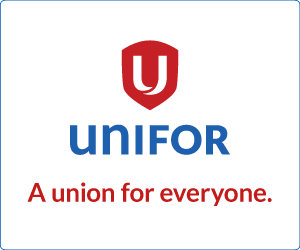Mr Harper’s End Game
It is telling that the Idle No More movement started with four First Nations women—Nina Wilson, Sylvia McAdam, Jessica Gordon and Sheelah McLean who gave the first “Idle No More” teach-in. Sylvia McAdam is a lawyer, as is Tanya Kappo, who first tweeted #idlenomore. Perhaps they are of the “New People” of the Anishinaabek Seventh Fire prophecy. Perhaps they are of those who refuse to see themselves as victims, but rather as human beings with rights that are being eroded and responsibilities that need taking up, Time will tell, as it has told of past abuses and as it is telling of present wrongs.
In 2007, Mr Harper gave the Kashechewan First Nation a choice. Either stay where they were put in 1957, or move to Timmins—stay in a place where you might get sick again from E-coli or lose your land and move to town. To become what? Beggars? Assimilated? The people suggested a third way and asked Mr Harper to move them upstream, to their original home. He refused.
During the pomp and ceremony of Mr Harper’s apology to Aboriginal Canada for the Indian Residential School System, a First Nation’s commentator on the CBC radio said “at least it was well written.” (I think it was Mary Simon, but I can’t find the clip on the CBC website and queries have gone unanswered). It was her way of wondering if the apology was sincere and would ever lead to reconciliation.
Perhaps she had seen this sort of thing before. Such apologies are cheaply made and dearly bought. They give only the appearance of reconciliation, because only equals can be reconciled. An apology is insincere if made to people abused, for they are in no position to refuse it. But refuse it they must lest the apologizer take his apology as licence for some fresh offence.
Indeed, the ink was hardly dry on the apology when the federal government cancelled a scheduled increase in funding aimed at rescuing First Nations’ languages fading from decades in residential schools.
In 2011, Attawapiskat declared a housing emergency. Mr Harper’s first response was to blame the Band. He even appointed a third party manager (at $1300 a day), which the courts determined was neither warranted nor needed. What remains from that crisis (and you can see it in comments posted on stories about Chief Spence’s fast) is the public perception that First Nations’ governments are corrupt.
They are not. Even the recently leaked audit of Attawapiskat’s financial management makes no allegations of fraud or theft. It does however, point out some serious lapses in accounting practices and its recommendations are aimed as much at the government as they are the First Nation.
In 2012, the Harper government passed two omnibus bills which somehow implemented the budget by weakening environmental laws that “corrupt” First Nations leaders use to protect their traditional territories.
As environmental lawyer Dianne Saxe puts it, “The cumulative effect of the government’s changes to the Fisheries Act, the Canadian Environmental Assessment Act, and the Navigable Waters Act is to dramatically reduce the protection to fish and waterways. This must be of concern to First Nations, indeed to all of us.”
Now there is a suite of nine or ten separate legislative initiatives that will directly affect First Nations governance.
There’s Bill C-27, the First Nations Financial Transparency Act. About time you say? Overkill, Sheila Fraser would say. Would that Indian Affairs was held to the same standards, and she said as much in her 2006 and 2011 reports.
Bill S-8, the Safe Drinking Water for First Nations Act doesn’t actually provide safe drinking water to reserves. What it does, is dump a bunch more regulations and reporting obligations on First Nations without the funds to actually, you know, deliver safe drinking water.
The First Nations Private Property Ownership Act is still a twinkle in Tom Flanagan’s eye, but when it hits the floor of the House of Commons it will, like the Dawes Act in the US, do the dirty work of separating First Nations’ people from their land.
Consultation (and it’s obverse, accommodation) is, according to the Supreme Court of Canada, the best path to reconciliation. It is the only way to peacefully resolve the tangle of federal, provincial, First Nation and corporate jurisdictions, rights, claims and obligations. Besides, like it or not, it’s the law.
Apparently the Harper government doesn’t like it. If it consults at all, its consultation has all the substance and nourishment of a Cheeto. There was no consultation on the legislative changes described here and insufficient consultation (let alone accommodation) regarding the impact of the oil sands in Alberta or the large mining projects coming to the Ring of Fire in Ontario.
To make matters worse, the Harper government is slashing the budgets of Treaty Organizations by some by 50-70% These organizations provide expertise to their member First Nations in a number of areas, including financial reporting and assistance in consultations with government and industry.
Meanwhile, provincial and federal governments are spending more money on tax-breaks and subsidies to oil and gas and mining companies than they spend on First Nations health, education and housing.
And that, in case you’re wondering, is why young First Nations people are idle no more.
A Bit More…
The Olthuis Kleer Townshend Law Firm website has a 2-page summary of the legislative changes referred to above.
Very briefly, the changes to environmental legislation in omnibus Bills C-38 and C-45 can be summarized as follows (follow the links for more information)…
The revamped Fisheries Act begs the question (which will surely be put to the courts): What, for the purposes of the Act, is an “Aboriginal fishery?” The new Canadian Environmental Assessment Act removed a number of projects from the list of those requiring an Environmental Assessment, including the transportation of nuclear waste and restricts who can participate in EAs. The Navigable Waters Protection Act reduced the number of lakes and rivers that fall under the Act from several millions to 62 rivers and 97 lakes (including twelve in Minister Clement’s riding—call it the Goldie Hawn Vacation Get-away Protection Act). The Kemptville Creek is protected but the mighty Attawapiskat River is not on the list.
For comment on blaming Attawapiskat at Slaw, Canada’s online law magazine:
For the law (and the benefit) of consultation and accommodation go to Haida vs BC.
For Alanis Obomsawin’s documentary, The People of the Kattawapiskak River, on the housing crisis at Attwapiskat visit the National Film Board. The Trailer is below.










